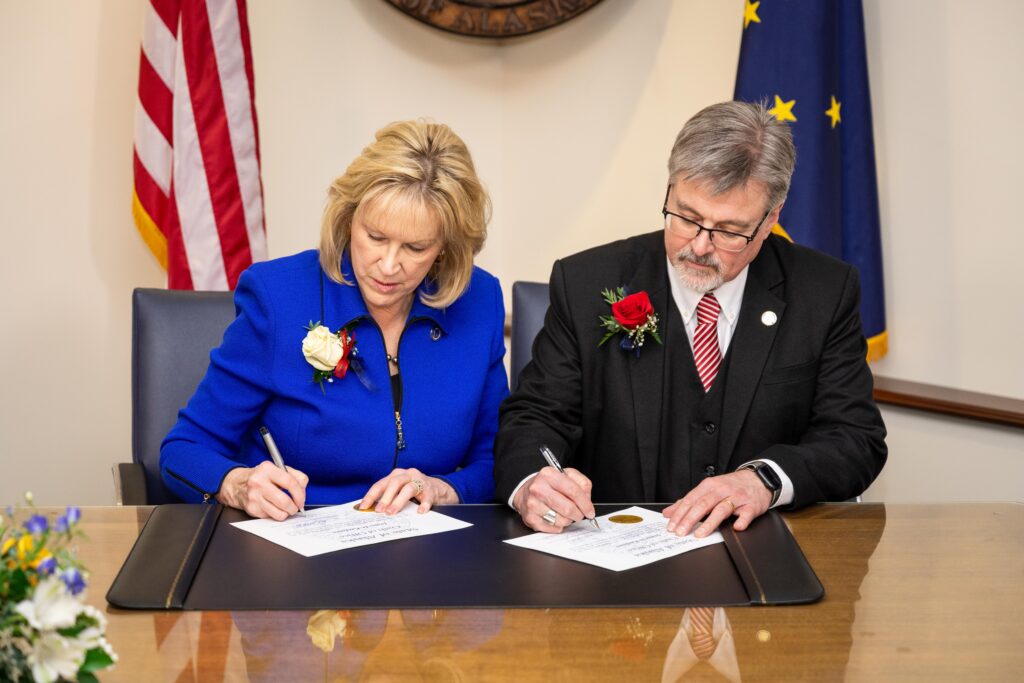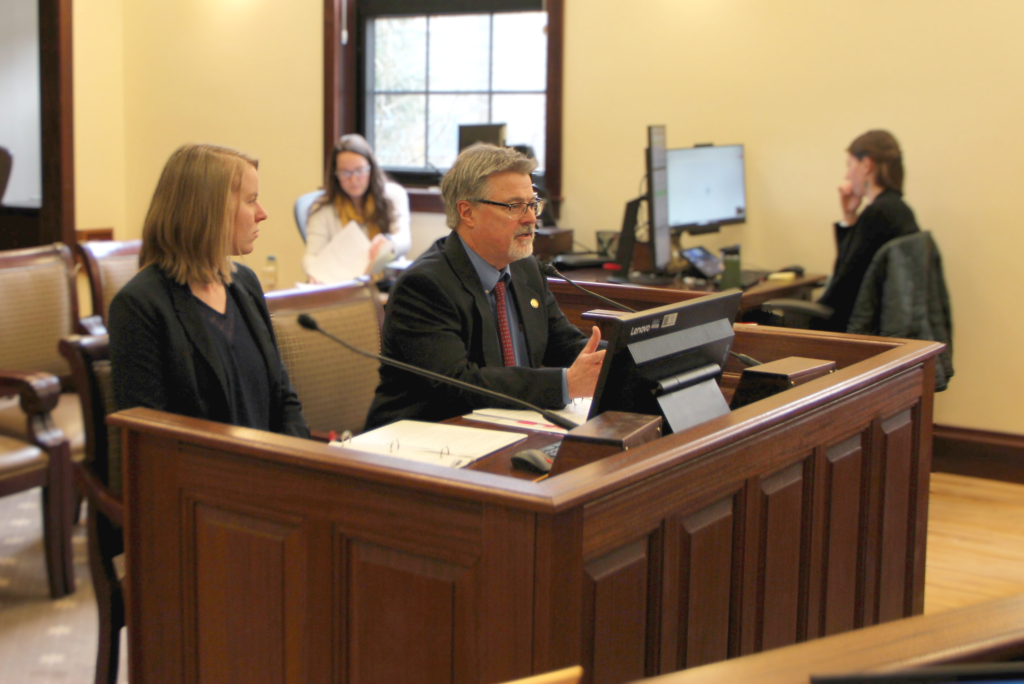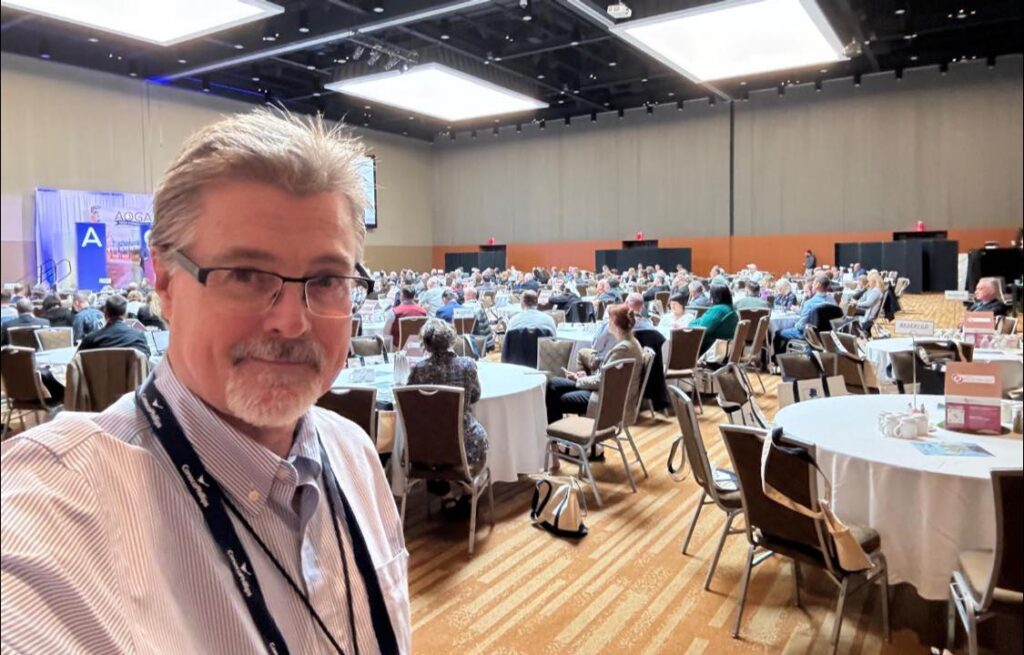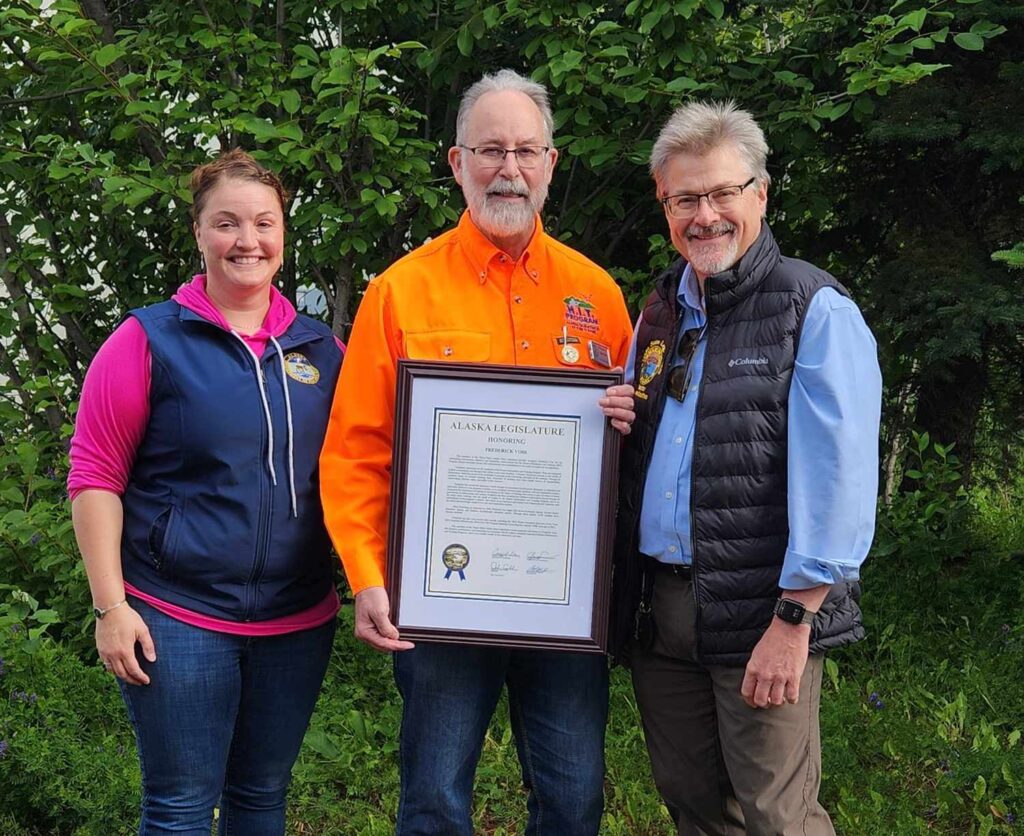Hello and thank you to my friends and neighbors in Senate District F!
It is an honor to have once again been reelected to serve district as the state senator for District F. The 34th Legislature has officially kicked off and it’s already busy. I’ll be serving on the Senate Finance Committee for the coming two years, so I will have a ringside seat to many of the big issues we are facing as a state.
As always, I will do my best to provide commonsense solutions to the challenges that we face in our great state, so thank you once again for putting your trust in me.
In my view, this session is all about the big “E’s”: Education, Energy, and the Economy are at the top of the list, and it’s all going to play out against the backdrop of a year in which revenues are not quite as robust as they were last year. There will be a lot of “creative tension” as the various needs for funding are considered and debated.
On Education: there is a great deal of consensus in the Legislature that we need to increase the annual funding for the Base Student Allocation (BSA) and pass some policy reforms, and the great debate is really about the dollar value (most importantly, what can we afford?) and what those policy elements look like (what assurances of improvement are going to go along with the funding). See more below in our education summary.
Energy not only fuels our state, but it also helps pay a big chunk of our bills. The gas supply for the rail belt has been a big issue, with well-founded fears and there are proposals being considered for a gas import terminal, to provide a near-term stable source of supply as long as production in Cook Inlet remains low.
Meanwhile, the proposal to build a pipeline to bring North Slope natural gas both to the rail belt and to global markets is getting more attention now that there have been some interested investors and a federal administration more interested in responsible resource development. The big question is whether or not the project economics and execution plan are ultimately viable. We all want the gas supply and revenue, but the Legislature will be working to ensure we are not pursuing proposals that won’t pencil out and deliver value. These are a few of the big energy topics shaping up for this year; I will dive deeper in my next newsletter.
Our economy is greatly affected by education, workforce development, energy costs, and the revenue we receive from the projects that helps fund our programs and infrastructure improvements. A new source of energy and resource royalties could help on all fronts, allowing us to develop opportunities that are currently just out of reach.
There’s lot’s more below, so please take a look, and as always, stay in touch and let me know if you have any questions! You can reach us anytime at this email or at 907-465-4949.
Joining the Senate Finance Committee
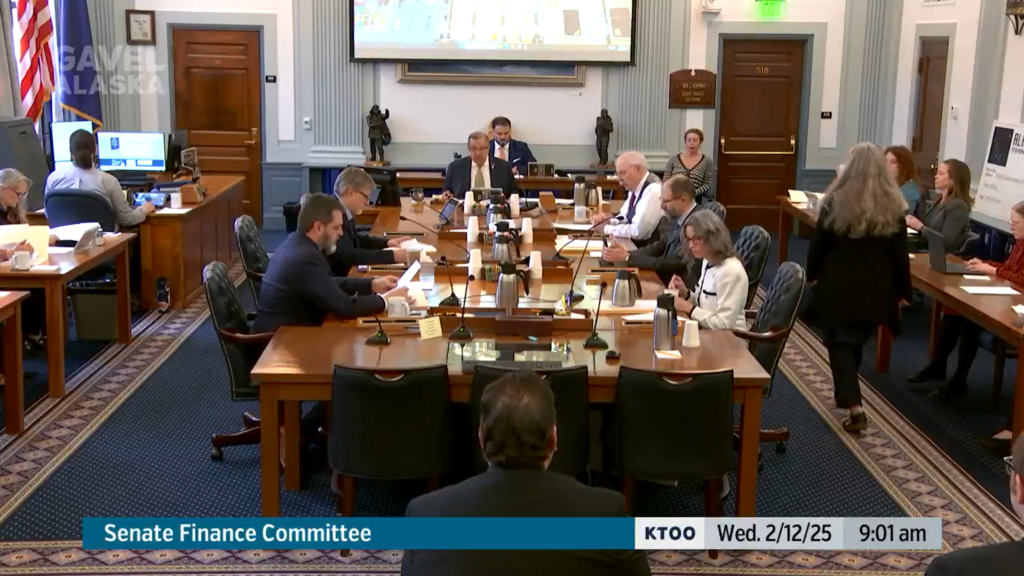
This session I am excited to be a member of the Senate Finance committee. The Finance Committee oversees the budget for the State of Alaska well as any bills that will have a fiscal impact on the state. This makes it an integral part of the Legislature. It is the sole committee I will be sitting on this Legislature and I intend to work hard along with my Senate colleagues to tackle the budget and other fiscal issues that will make its way through the committee this session.
These first few weeks in committee so far have been filled with overviews from various departments of the State of Alaska. We’ve heard from the Department of Natural Resources (DNR), the Department of Revenue (DOR), the Office of Management and Budget (OMB), the Alaska Gasline Development Corporation (AGDC), and the Alaska Permanent Fund Corporation (APFC), just to name a few.
One thing of particular interest; the Division of Retirement and Benefits gave a presentation on the status of the pension funds they manage. At the end of the presentation, I was able to ask the Director of DRB about the recent intrusion into their servers that prevented them from properly processing thousands of contributions from employees across Alaska. We have been informed that the state intends to make all effected employees whole. Once the issue is completely resolved, employees will have their delayed contributions deposited into their retirement account PLUS the equivalent of the market returns those contributions would have made without the delay.
If your retirement account was affected and you would like some more information, please shoot me an email and I can give you more details.
What’s Up with the Budget
In this section, I’ll focus on the operating budget and what we’ve heard in the Senate Finance Committee so far:
The budget is split into three separate appropriation bills: Capital, Operating, and Mental Health. Going through each of these budgets and making sure we get the right spending amounts is a very important part of what we do here in the Legislature, and the Finance Committee has one of the most important roles in shaping those budgets.
The Department of Revenue gave us their assessment of what revenue will look like for the State of Alaska going forward. Revenue from oil royalties is expected to decline as forecasts show declining oil prices and flat production in the near term (production is expected to start increasing in the next few years once Willow and other oil projects come online but it will take time for the state to see an increase in revenue from them).
The Percent of Market Value draw (POMV) from the Permanent Fund continues to be the largest revenue generator for the State of Alaska to be used for unrestricted general funds. The amount from the POMV draw is nearly $4 billion for FY26.
The budget that was passed by the Legislature last year was balanced, however, due to lower than expected oil prices and some additional spending requests, such as disaster relief for storms in western Alaska, last year’s budget will require additional funds known as a supplemental appropriation.
All of these factors coupled with lower oil prices means that this year’s budget is looking extremely tight. At least for this year, and possibly for the next few, the revenue the state generates from the POMV draw and from oil taxes are unable to keep up with the continued rise in operating costs for the state.
As I will discuss in a later section of this newsletter, there is likely to be an increase in education funding which will further strain our already tight budget. Even if the Legislature appropriates the same amount of education funding as we did last year, which included the statutory Base Student Allocation (BSA) along with an additional one-time funding that was equivalent to a $680 BSA increase, and the same PFD formula used in last year’s budget, this year’s budget would have a deficit and would require us to dip into the state’s saving account.
I believe it is more likely than not that the Legislature this year will increase education funding from last year’s budget. For those doing the math, that means the Legislature will need to find the funding from somewhere else in order to pass a balanced budget. Therefore, there are three basic options to accomplish a balanced budget: (1) Reduce spending in other parts of the budget, (2) Increase Revenue, or (3) Dip into our savings account.
Negotiations will be taking place throughout the legislative session to find a compromise spending package. I intend to stay focused and engaged with my colleagues to deliver efficiency and identify opportunities that make sense for Alaska.
If you have any comments or suggestions, please feel free to give my office a call or shoot me an email!
What’s Happening with Education Funding this Year?
What happened last year:
Education funding and policy reforms are front and center again this session. To recap last session, after a larger education package (SB 140) ultimately failed to become law, the Legislature provided a one-time education increase (equal to a $680 increase to the Base Student Allocation).
What’s going on in the Legislature this year:
This session, I believe there is a strong desire in both the House and Senate to see a permanent education funding increase and needed policy reforms passed before the end of this session. To that end, members from each of the four caucuses (House Majority/Minority and Senate Majority/Minority) and representatives of the Governor have been working together to put together an education package deal. That working group began early last week and is expected to wrap up in the next week or so.
As we wait for negotiations between the Legislature and the Governor to wrap up, my colleagues and I are digging into the education bills that are currently making their way through the Legislature. I will list them all below, and I encourage you to take a look, but keep in mind that whatever package is negotiated may incorporate elements or compromises of the ideas already introduced, or it could be very different. I will keep you posted with what bills to follow once the working group wraps up.
Primary Education Bills right now:
- HB 69 proposes a $1,808 increase to the BSA spread over three years. Going forward, the BSA would be adjusted for inflation each subsequent year. The current bill does not make any changes to education policy.
- HB 76 / SB 82 proposes direct bonuses to teachers, a path for charter school schools to be authorized directly on the state level, a funding bonus for schools that achieve reading proficiency by 3rd grade, and increased funding for correspondence and technical education. The current bill does not make any changes to the BSA.
There are a few other bills seeking to impact education: Civics education (SB 23), mental health education (SB 41), restructuring how schools receive state funding (SB 46), state-tribal education compact (SB 66 / HB 59), and education for students who are deaf and hard of hearing (two separate bills, SB 8 and HB 39). These will most likely not end up in a bigger compromise education package. Instead they will continue to work their way through the process on their own.
Anchorage School District Budget
Last month, the Anchorage School District released their proposed 2025-2026 budget indicating a $111 million deficit. I have heard concerns from many parents and teachers in our district that important programs would be scaled back or eliminated entirely if the proposed budget is finalized as is.
I share your concern, some of the proposed cuts are troubling. However, it’s important to note that the proposed ASD budget is based on the current Base Student Allocation (BSA) and does not factor in any additional annual funds from the state that are likely to be approved this session. While we are too early in the process for me to make a guess on what the compromise funding increase amount will be, I believe we will be able to pass one before the end of session.
Stay involved!
We are still very early on in this process and so the specifics and bill numbers will likely change as we move forward. I will keep you updated!
In the meantime, I encourage you to get involved with the Anchorage School District and your community council. Please reach out if you have any questions or thoughts at this point on funding or education policy that need to change! Your feedback is greatly appreciated, especially at this stage.
Learn more in past newsletters:
If you are interested in my perspective throughout the process last year, read my newsletters on the subject:
Capital Budget & Projects for our District
What’s happening this year:
Representative Coulombe (House District 11) and Representative Schrage (House District 12) and I have been working with our local Community Councils and Limited Road Service Areas (LRSAs) to submit our district’s capital project requests. I am grateful that we were able to take care of several important projects with funding we secured last year, however, there are still important to get done.
We have received all the project requests and are now working to edit, prioritize, and finalize the list that we will submit to our Finance Committee. Look out in my next newsletter for a full list.
How the budget will affect our projects:
I have been cautioning everyone that a very tight budget this year is making discretionary funding for our district much less likely than last year. Regardless, the work we put into preparing project requests this year will make future year submissions smoother.
I advise the community councils that I work with to also focus on the AMATS (local transportation planning group) process through the Municipality of Anchorage. Many of these projects are locally driven, so starting engagement at the municipal level is highly advised. For non-profit groups I advise grassroots efforts, community engagement, and reaching out to resources such as forakergroup.org who provides great support and education.
Please don’t take any of my cautionary statements to mean that we don’t push as hard as possible for these capital projects. I also encourage you to send me letters of support for any projects included in the full list of submitted projects below. They help!
Other grant opportunities:
Senator Murkowski has opened applications for Congressionally Directed Spending grants. Non-profit organizations and government entities are eligible to submit capital project requests for consideration through February 14. Learn more here >>
Mayor LaFrance has opened applications for 2025 Mayor’s Community Grants. Local charities and non-profits working to improve the Municipality’s well-being are eligible to submit applications for applicable grants. The deadline is March 10. Learn more here >>
Get involved!
If you’d like to get involved with your community council, I encourage you to visit communitycouncils.org to find yours.
Service High Student Art in the Capitol
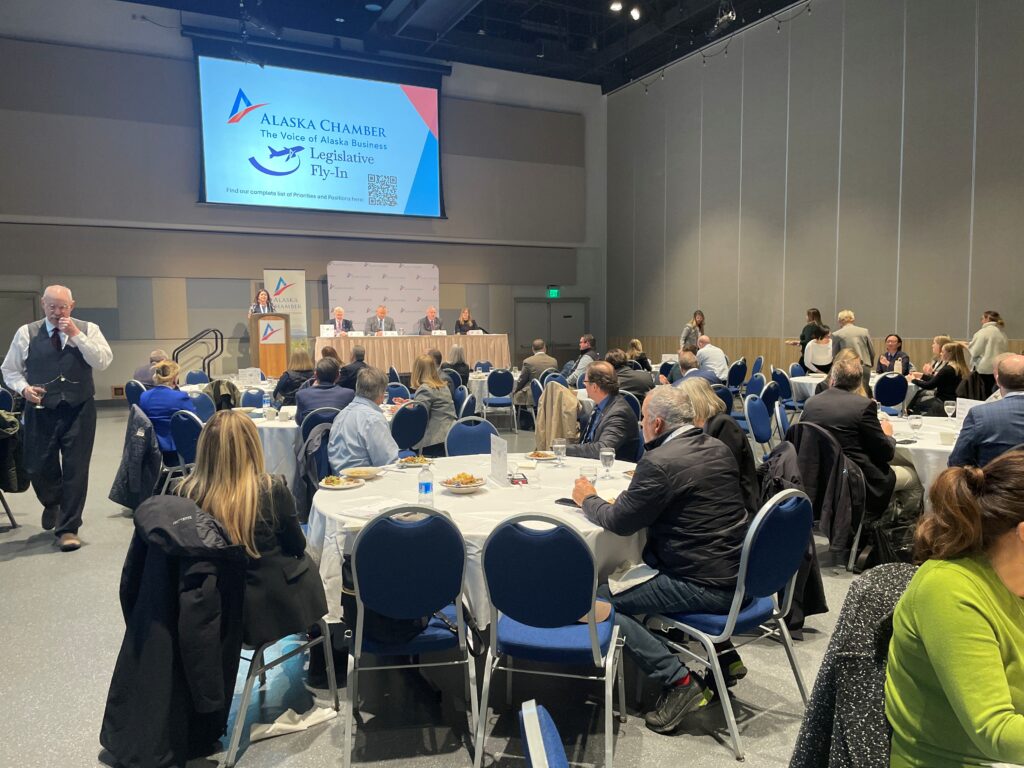
I enjoyed the chance to join the Alaska Chamber for their annual Legislative Lunch held just down the hill from the Capitol. It was a great chance to connect with both large and small business owners and hear more about what they are dealing with day to day. I continue to look for ways to get government out of the way of the people driving our economy. I appreciate the Chamber’s continued support of state spending caps, such as my GDP-based spending cap (read more about SB 36 below).
Maelea Joins us in Juneau!
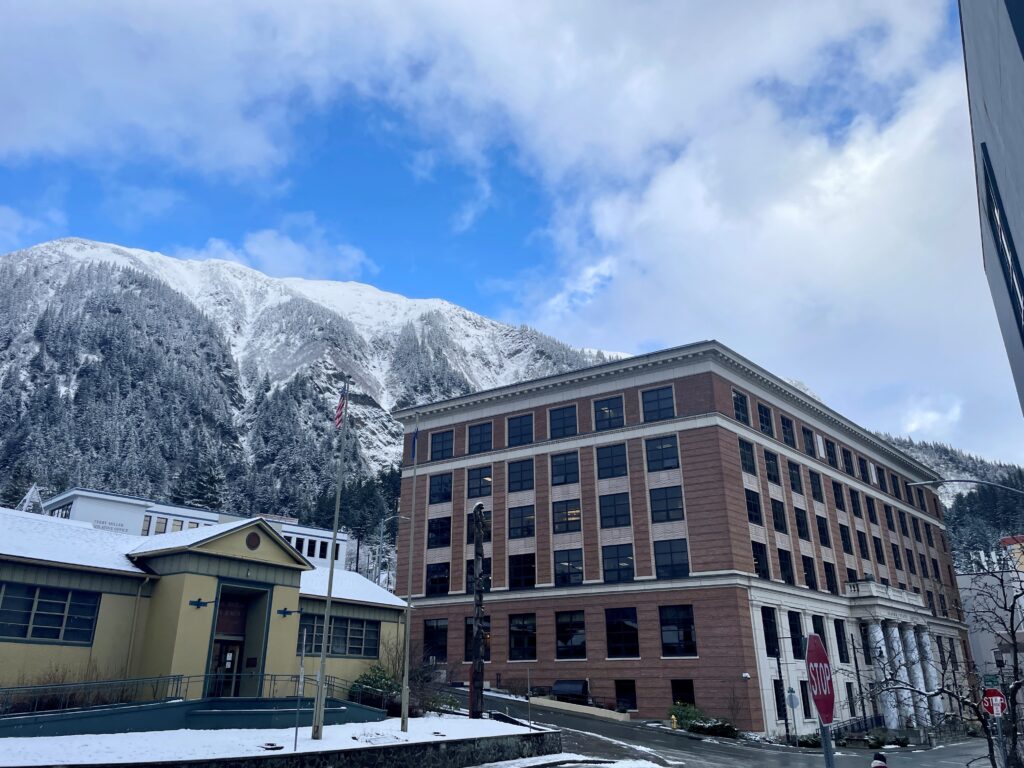
We’ve had a remarkable week of sunshine in Juneau. Here’s a photo of my walk to work one morning!
Catch Up on My Bills!
Since I joined the Legislature in 2021, my team and I successfully passed 10 common-sense bills. They addressed government efficiency, workforce development, affordable housing, data security, an all-of-the-above approach to energy, and ensuring Alaskans have responsible access to our incredible lands. If you want to learn more about each of them, you can read about them here, here, and here.
This session, I am focusing my attention on the Finance Committee and preparation of the state’s budget. However, I am once again putting forward and advocating for each element of a broader fiscal plan for the state of Alaska.
GDP-Based Spending Cap | SB 36 / SJR 4
Senate Bill 36 is a functional state spending cap which constructively links our private sector performance (measured by GDP) and government spending. An effective limit like this one creates stability and predictability in our budgeting process – in economic boom years, extra revenues are pushed forward, preventing the need for drastic cuts in economic bust years. SB 36/SJR 4 is in the Senate Judiciary Committee.
The Executive Budget Act | SB 37
Senate Bill 37 reorganizes the Executive Budget Act to integrate strategic planning and performance management into the state’s budgeting process. This legislation would put state agencies on four year strategic operating plans, help the Legislature more effectively review budgets for each agency, and improve transparency for the public. SB 37 is currently in the house State Affairs Committee.
Permanent Fund Account Modernization | SJR 5
A little background, the Permanent Fund is broken into two accounts, the constitutionally un-spendable Principal (~70 billion) and the spendable Earnings Reserve Account (ERA) (~10 billion). In 2018, the Legislature began using a 5 Percent of Market Value (POMV) draw to manage withdraws from the Permanent Fund. That 5% is based on best practices of other large endowment funds. Since then, yearly POMV draws and required inflation proofing have begun depleting the ERA.
There is a growing understanding by both the Permanent Fund Corporation and the Legislature that the two-account structure (where only the ERA is available for appropriation by the Legislature) could result in a fiscal crisis if the ERA is ever depleted far enough. At the end of last year, APFC’s Board of Trustees produced “2024 APFC Trustees’ Paper 10” which outlines in much more detail the problem and recommended solution. You can read that here >>
SJR 5 consolidates the Principal and the Earnings Reserve into one account managed for total return. It then constitutionalizes a “no greater than” 5.5% yearly POMV draw. The expectation is that a lower POMV draw would be put into statute. It also includes language ensuring that a Permanent Fund dividend is paid yearly according to a formula in statute. SJR 5 is currently in the Senate Judiciary Committee.
Creating an Office of Information Technology | SB 38
Senate Bill 38 recognizes the fundamental role of Information Technology (IT) projects in innovative solutions that can move Alaska into a new era of management and operations. This bill establishes the Office of Information Technology within the Department of Administration. This legislation creates clear roles, guides development of structured processes, and standardizes management practices for overseeing IT projects across state agencies.
We empower the State Chief Information Officer (CIO) to oversee IT projects, ensuring adherence to best practices, ensuring budget compliance, and delivering results that align with legislative intent. SB 38 also requires state agencies to document IT project requirements in biennial information technology plans, promoting transparency and accountability. Advancing this bill helps to create a more efficient, responsive, and customer-driven information technology landscape in our state, ensuring that IT projects continue to play a crucial role in enhancing the lives of all Alaskans. SB 38 is currently in the Senate State Affairs Committee.
Future bills are forthcoming!
I am working on a couple of other bills that will be introduced later this session. Stay tuned!
I am Here to Help!
As always, I want to hear from you! Whether you have an opinion you would like to express or if you need help with anything government-related, please reach out via email or phone call and I will do the best to assist you.
Reach out!
By Phone: Monday-Friday, 9am to 5pm
By Email: Anytime!
P: 907-465-4949 | E: Sen.James.Kaufman@akleg.gov

